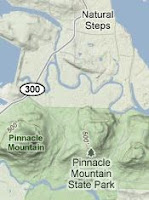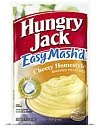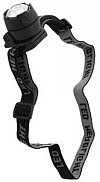First, there is no Greyhound bus service to Harpers Ferry, WV.
However, there is Greyhound bus service near Harper's Ferry WV.
How to Get to Harpers Ferry by Greyhound
Greyhound serves three relatively nearby cities. Greyhound currently serves Hagerstown MD, Fredrick MD and Washington DC. Of these three, it is far
easier to get from the Greyhound stations in Washington DC to Harpers Ferry WV. Here's how we did just that for our 2010 section hike from Harper's Ferry WV to Harrrisburg PA.
Arriving at Union Station
Being in the southwest, Greyhound routed us to Washington DC via Roanoke,
Lynchburg, and
Charlottsville VA. (We'll add posts on their bus stations shortly). This bus stops at Union Station minutes before stopping at the Greyhound station up the street. The Greyhound bus we were on came in behind the U.S. Capitol and entered on the right (north) side of Union Station. The bus goes up a ramp in the rear of Union Station to the second floor deck level. This is were most buses including tour buses arrive and depart from.
After claiming your bags, you proceed east towards the building and the ramp. Follow the crowds down the escalator into Union Station proper. At the bottom of the escalator, you should see McDonalds ($1 value menu offered) to your far left at the north end of the departure area. The MARC departures are at gates one through four (1-4) to your far right and just before the liquor store and the men's room. You likely need to purchase a MARC ticket for the train to Harper's Ferry, so just continue straight ahead and then turn to your right where the ticket counters start.
A ticket to Harper's Ferry is currently $11 one-way on the MARC. The Harper's Ferry MARC is an express which skips about a half dozen early stops.
As you're likely early, you might like to back track and locate the exact location of the MARC gates. There is a MARC waiting area just to the right of the gates with a departure video display.
If there's still time and you're hungry, just walk past the liquor store and hang a left. There a series of cafes along the west end of Union Station. Prices are largely the same from eatery to eatery. If you'd like some fresh fruit or bread, just continue south past the bookstore and outside. There are about a dozens stalls on the west porch that offer water, fruit, bread, flowers, and other commuter favorites. This is also the smoking area if you venture much further.
Boarding the Train
Closer to boarding time, head on back to the waiting area. Note that commuters line up just outside the MARC gates and then rush the trains as they open for boarding. Don't feel compelled to join the stampede as there are plenty of seats. Many of these early arrivals are regulars and are competing for seats on the upper deck.
When your train begins boarding follow behind the crowd. We jumped in the first door we found open. You might take a moment and confirm with a commuter that you are in fact on the train to Harper's Ferry. Find a seat on the lower level and get comfortable. (We sat on the left hand river side and it didn't seem to matter. There wasn't much to see on this leg.) Slide your ticket into the metal clip on the top of the seat in front of you. The conductor will be by around departure or just after to check your ticket. Don't be surprised to see a police officer at the far end near the stairs. Its post 9/11 after all. No one searched our pack, but we were given an eyeballing a few times.
Arriving at Harpers Ferry
The train arrives at the foot of Union Street and much of Harper's Ferry business district will be closed.
Lodging & Camping
There are two bed and breakfast inns across the street from the ATC office and the post office is just a few blocks past them on the same side of the street.
If you'd like to stay at the Comfort Inn, then just follow the AT south to the Shenandoah River bridge. The AT heads south at the bottom of Union Street and goes up stone steps past the Catholic Church. Jefferson Rock is along this short section of the AT. Comfort Inn will be just to your right at the bridge. Hikers give the Comfort Inn mixed reviews, so
caveat emptor.
If you want somewhere free to stay, then just head back to the train bridge you just rode across and walk back into Maryland. Hang a left on the C&O canal and walk two miles upstream (left) to the
Huckleberry Hike & Bike camp. We had it to ourself mid-week. There are several tent areas, a picnic table and a BBQ grill. We found several good trees to hang our hammock from which gave us a nicely framed view of the Potomac River.



















 During our recent
During our recent 












